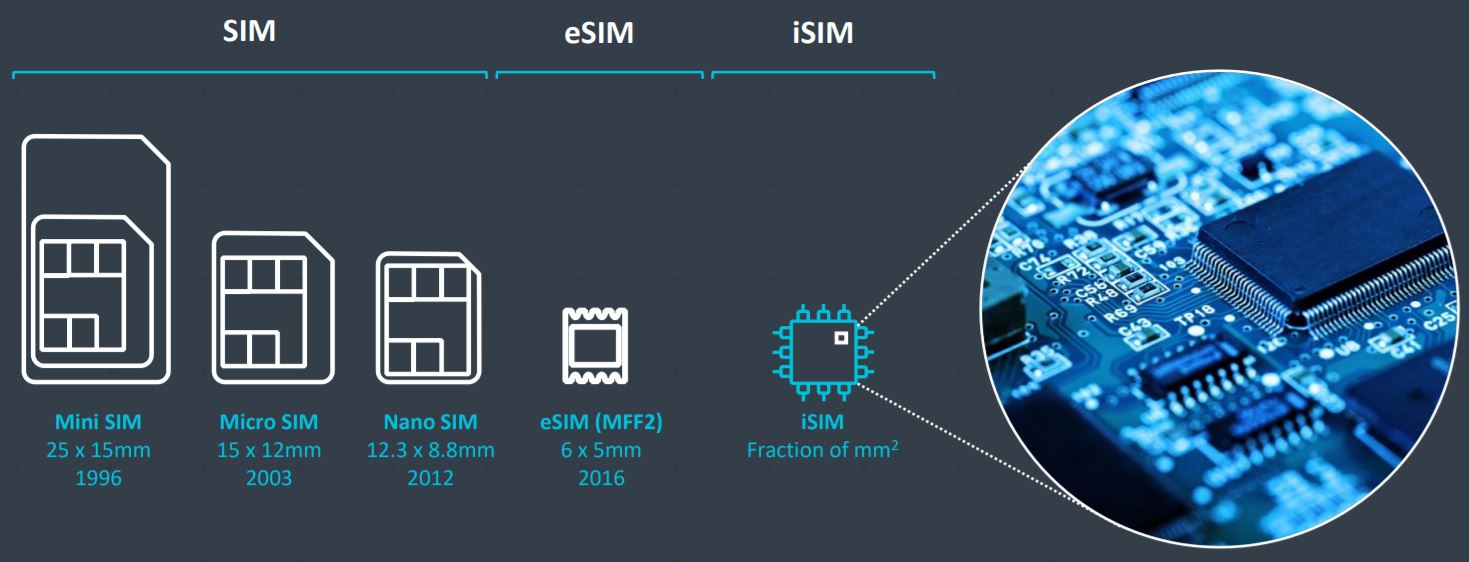If you look at SIM cards then there hasn’t been much of an evolution. The physical SIM cards still dominate whereas eSIM hasn’t really become mainstream. We might not be too far away from yet another change in SIM tech, as devices could soon start using iSIM.
Earlier this year, Arm unveiled its vision for the iSIM – an integrated SIM that fits into a device’s system-on-a-chip. In the future, along with a CPU, GPU, LTE or 5G modem, your next phone SoC could also include the SIM card built inside it too.
What is iSIM technology?
iSIM is a new technology that enables the functionality of a SIM card to be integrated into a device’s main processor. So instead of having a SIM card slot in any device, one would have the SIM in-built in the processor. The tech is actually like an eSIM but it is embedded into the devices. iSIM complies with GSMA specifications, embeds the SIM functionality into the device’s main processor. Qualcomm says that this will allow for better performance, more memory capacity and greater system integration. You could get more out of your devices with an iSIM.
eSIM vs iSIM
eSIM and iSIM are rather similar in a number of respects. Both replace the transferable nano SIM cards with a hardware chip that’s permanently fixed inside a user’s phone, tablet, or other gadget. When you consider that nano SIM cards are around 12.3 x 8.8 mm in size, as well as the hardware necessary to house them, these ideas save on a lot of space.
Don’t fret, eSIM and iSIM are still configurable, allowing customers to select carriers, data plans, and to change their numbers at will.
These two SIM technologies can be reprogrammed as needed to change carriers and modify restrictions or permissions on your tariff. This also required the development of standards for remote provisioning. Here, SIM information is updated over the cellular network rather than by physically changing a card.
Better still, eSIM and iSIM can be used to register a single device on multiple operators, simplifying international roaming. Transfering between carriers won’t require you to replace your SIM, and in the future, it should be possible to manage credentials and access multiple devices using eSIM or iSIM using just a single tariff. This applies to both the business and consumer worlds.
The key difference between eSIM vs iSIM is in their implementation. While an eSIM is a dedicated chip attached to a gadget’s processor, an iSIM is embedded in the main SoC alongside the processor. That might only be a subtle difference, but it is an important one for a number of growing use cases that demand high levels of security.

What are the benefits of using an iSIM?
iSIM technology means that SIM cards could go beyond mobile phones. They could be integrated into laptops, IoT devices, smartwatches and even virtual reality platforms. Qualcomm says that the benefits could be on multiple levels. For instance, the device design and performance could be enhanced as it gives more space within a device. With no SIM card slot, there’s more scope of innovation with design. Also, telecom operators can leverage existing eSIM infrastructure. It further brings the capabilities of a SIM card to devices where previous imagining a SIM wasn’t possible.
*Source : Times Of India || Android Authority
